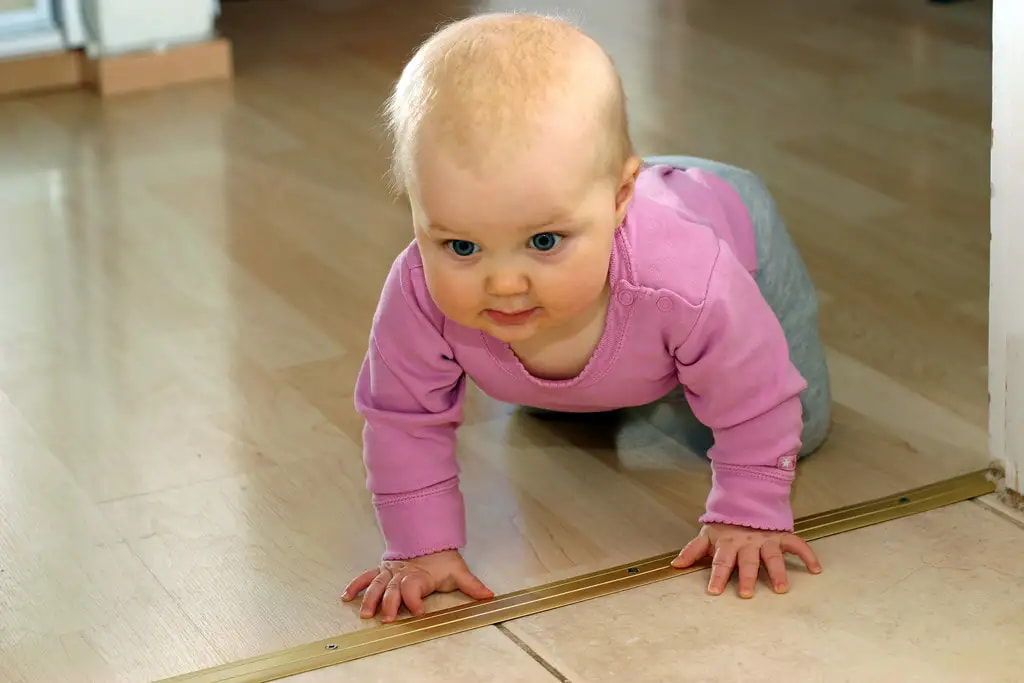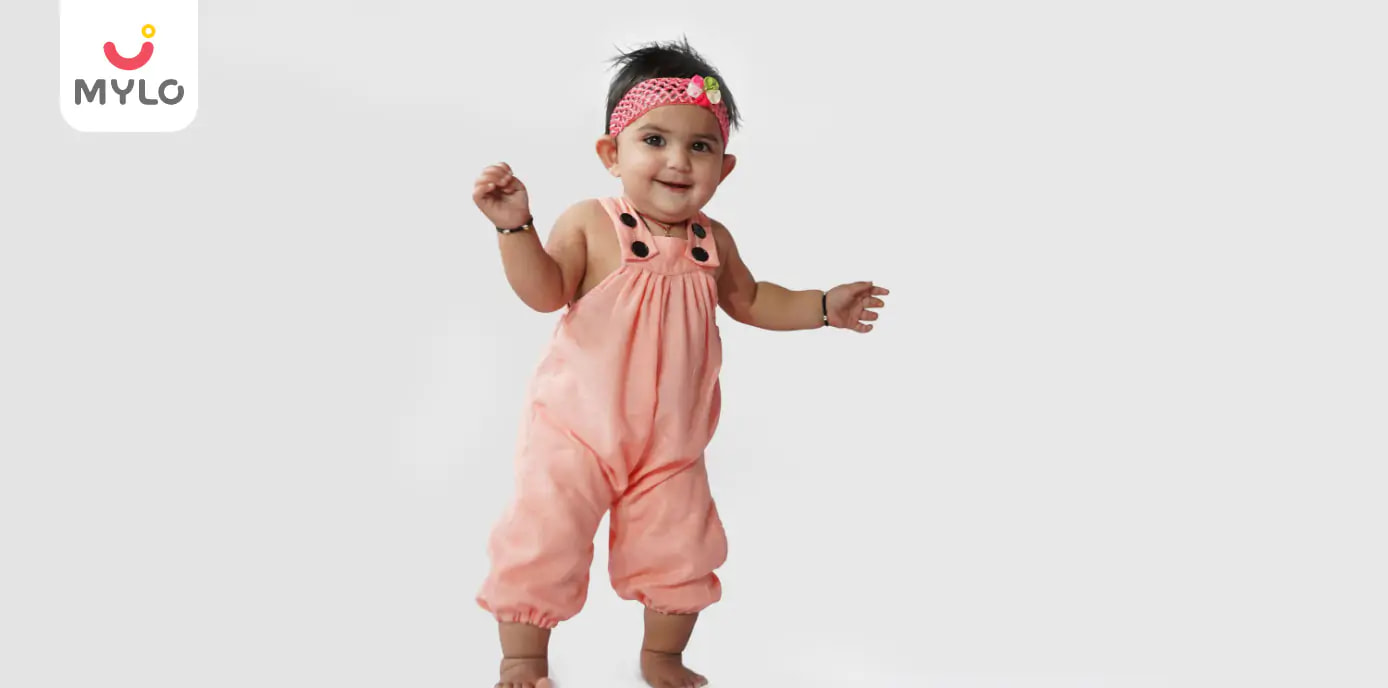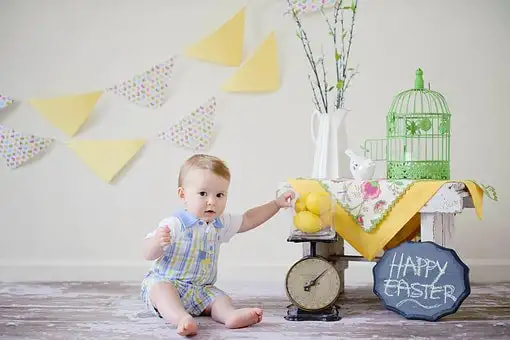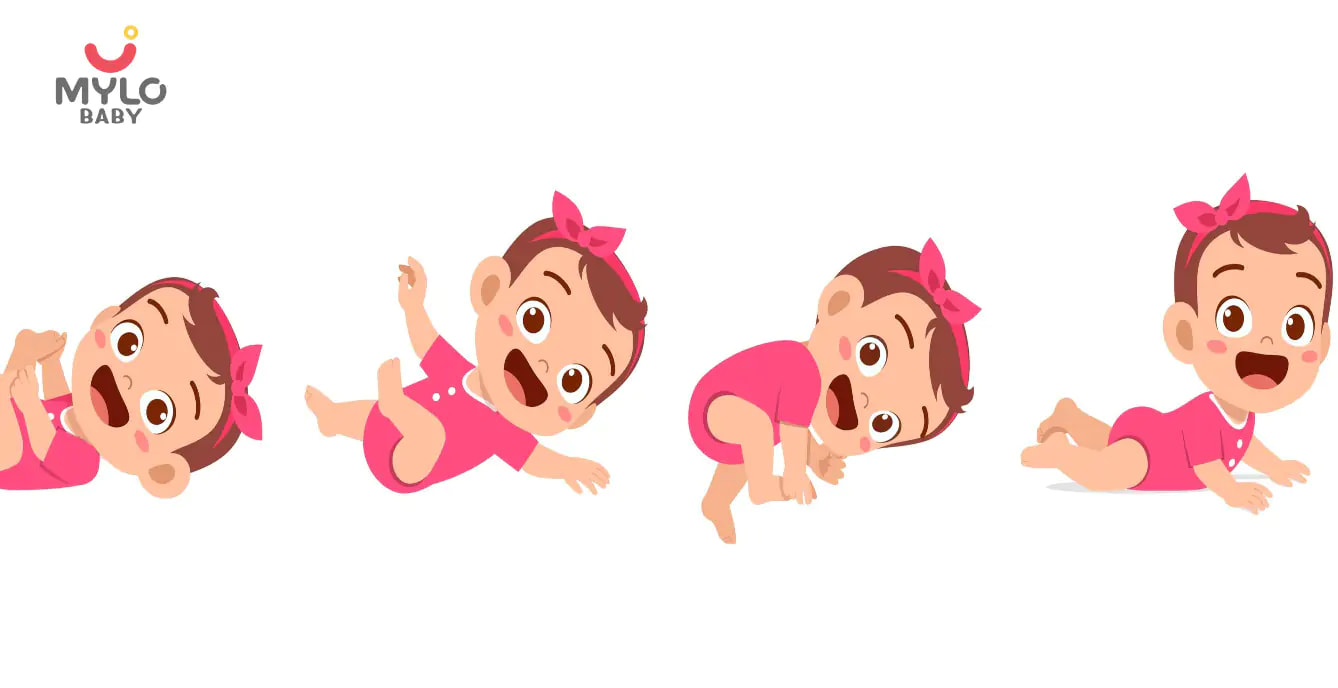Home

Growth & Development

Baby Crawling: A Parent's Guide to Baby's First Moves
In this Article

Growth & Development
Baby Crawling: A Parent's Guide to Baby's First Moves
Updated on 28 February 2024
As a parent, witnessing your baby reach important milestones is a joyous experience. One of the most exciting moments is when your little one starts crawling. Crawling is a significant developmental stage that helps your baby explore their surroundings and build strength. In this guide, we will delve into everything you need to know about baby crawling and tips to encourage your baby to crawl.
What is Crawling?
Crawling is a crucial stage in a baby's development that occurs between infancy and toddlerhood. It is the process of moving on all fours, using the hands and knees or hands and feet. It helps babies explore their surroundings, develop their muscles, and improve their coordination skills. It serves as a stepping stone towards walking and other forms of mobility.
When Do Babies Start Crawling?
Baby crawling age can vary as each child develops at their own pace. However, most babies begin to crawl between the ages of 6 to 10 months. Some infants may start crawling as early as 6 months, while others may take a little longer and begin crawling around 10 months. It's important to remember that every baby is unique, and there is no need to worry if your little one doesn't crawl exactly within this timeframe.
You may also like: Baby Milestones: A Week-By-Week Guide to Your Baby’s Development in the First Year
Signs of Baby Crawling
As a parent, it's essential to be aware of the signs that indicate your baby is ready to start crawling. While not all babies exhibit the same signs, here are ten common indicators that your little one is gearing up for their first crawling adventure:
1. Increased upper body strength
Your baby may start lifting their upper body during tummy time, showing signs of developing the necessary strength to crawl.
2. Rocking back and forth
Your little one may rock back and forth on their hands and knees, getting ready to propel themselves forward.
3. Scooting or shuffling
Some babies may scoot or shuffle on their bottoms, using their legs to move around before they start crawling.
4. Rolling over
Rolling from their tummy to their back and vice versa is a sign that your baby is gaining the strength and coordination required for crawling.
5. Pushing up on hands
Your baby might start pushing up on their hands while lying on their tummy, preparing to lift themselves off the ground.
6. Grabbing and reaching
Your little one may show an increased interest in grabbing and reaching for objects, indicating their desire to explore their environment.
7. Increased mobility
Your baby might start pivoting or rotating their body to reach objects that are just out of their grasp.
8. Crawling in place
Some babies may start practicing crawling movements, even if they haven't figured out how to move forward yet.
9. Crawling backwards
Backward crawling is a common precursor to forward crawling, as your baby learns to coordinate their limbs.
10. Crawling with one leg tucked
Your baby may experiment with different crawling styles, such as dragging one leg while using the other to propel themselves.
You may also like: Childproofing checklist: Before your baby crawls
What are the 7 Stages of Crawling?
Crawling is not a one-size-fits-all process. It typically occurs in a series of stages as your baby's motor skills develop. Here are the seven stages of crawling that your little one may go through:
1. Pre-crawling
During this stage, your baby is preparing their body for crawling by strengthening their muscles through activities like tummy time.
2. Rocking on hands and knees
Your baby will start rocking back and forth on their hands and knees, getting ready to move forward.
3. Belly crawling
At this stage, your little one will start pushing themselves forward using their arms while keeping their belly in contact with the ground.
4. Commando crawling
Commando crawling involves moving forward by dragging the body using the forearms while the belly remains off the ground.
5. Hands-and-knees crawling
Your baby will now shift from belly crawling to crawling on their hands and knees, using reciprocal movements.
6. Bear crawling
Bear crawling is a more advanced stage where your baby will crawl on their hands and feet, with their bottom in the air.
7. Creeping
Creeping is the final stage of crawling, where your baby will begin to crawl on all fours, coordinating their hands and knees to move forward.
You may also like: Here’s a List of a Lot of Things That You Need to Know When Your Baby Starts Rolling Over
Creeping vs Crawling: What's the Difference?
Creeping and crawling are two terms often used interchangeably, but they have distinct differences. While crawling involves moving on hands and knees or hands and feet, creeping refers to dragging the belly while using the forearms to propel forward.
Creeping is usually an earlier stage before babies transition to hands-and-knees crawling. It's important to note that both creeping and crawling are important developmental milestones and contribute to your baby's overall physical and cognitive growth.
You may also like: Signs That Your Baby Will Walk Soon
Tips to Encourage Your Baby to Crawl
If you're eager to see your baby take their first crawling steps, here are seven tips to encourage them along the way:
1. Tummy time
Regular tummy time sessions help strengthen your baby's neck, arms, and core muscles, preparing them for crawling.
2. Provide a safe crawling environment
Clear any hazards, create a safe space with soft flooring, and remove any sharp objects or small items that your baby might put in their mouth.
3. Use enticing toys
Place toys just out of your baby's reach to motivate them to move towards them. Interactive toys that make sounds or light up can be particularly engaging.
4. Get down on their level
Get on the floor with your baby and encourage them to crawl towards you. Your presence and encouragement can boost their confidence.
5. Use mirrors
Babies are fascinated by their reflections. Placing a mirror on the floor can motivate them to crawl towards it.
6. Use cushions or pillows
Create a small obstacle course with cushions or pillows to encourage your baby to crawl over them.
7. Avoid excessive assistance
While it's tempting to help your baby crawl, allow them to explore and figure it out on their own. Providing too much assistance may hinder their development.
Final Thoughts
Baby crawling is an exciting milestone that marks the beginning of your little one's mobility and exploration. Remember that every baby develops at their own pace, so there's no need to compare your child's progress with others. Celebrate each step along the way and provide a safe and encouraging environment for your baby to explore. With patience, love, and support, your baby will soon be exploring the world on their own two (or four) feet. Enjoy this precious time together as they embark on their crawling adventure!
Tags



Written by
Anupama Chadha
Anupama Chadha, born and raised in Delhi is a content writer who has written extensively for industries such as HR, Healthcare, Finance, Retail and Tech.
Read MoreGet baby's diet chart, and growth tips

Related Articles
Related Questions
Hello frnds..still no pain...doctor said head fix nhi hua hai..bt vagina me pain hai aur back pain bhi... anyone having same issues??

Kon kon c chije aisi hai jo pregnancy mei gas acidity jalan karti hain... Koi btayega plz bcz mujhe aksar khane ke baad hi samagh aata hai ki is chij se gas acidity jalan ho gyi hai. Please share your knowledge

I am 13 week pregnancy. Anyone having Storione-xt tablet. It better to have morning or night ???

Hlo to be moms....i hv a query...in my 9.5 wk i feel body joint pain like in ankle, knee, wrist, shoulder, toes....pain intensity is high...i cnt sleep....what should i do pls help....cn i cosult my doc.

Influenza and boostrix injection kisiko laga hai kya 8 month pregnancy me and q lagta hai ye plz reply me

Related Topics
RECENTLY PUBLISHED ARTICLES
our most recent articles

Weight Loss
Postpartum Diet Plan: Your Postpartum Nutrition Guide

Care for Baby
The Ultimate Guide to Crafting the Perfect Baby Photoshoot

Medications
Lupride Injection: How It Works and What You Need to Know

Hormones
Why are Some Women Recommended HCG Injection During Pregnancy?
Sudden Infant Death Syndrome
Sudden Infant Death Syndrome (SIDS): Meaning, Causes & Prevention

Periods
Period After Abortion: What to Expect About Timing, Duration and Frequency
- Thumb Sucking: How to Help Your Child Break the Habit
- The Ultimate Guide on How to Shrink Ovarian Cysts Naturally
- Ashwagandha Benefits for Female & Male Fertility: How This Ancient Herb Can Help You Conceive
- What are the 12 things that parents can do with their baby in the first 12 months?
- The Lowdown on Cetirizine in Pregnancy: A Must-Read for Expecting Moms
- The Ultimate Collection of Paheliyan with Answer for Kids
- The Ultimate Guide to Abdominal Pain After Abortion Causes and Care
- Ovulation Kit 101: A Beginner's Guide to Tracking Fertility & Maximizing Your Chances of Conception
- Is Breast Pain after Abortion Normal? What You Need to Know
- Twin Pregnancy: Signs, Types & Risks
- Chasteberry Benefits: The Natural Remedy You Need for Infertility, Hormonal Imbalance, and PMS
- The Ultimate Guide to Planning the Perfect Baby Shower
- 50+ New Born Baby Wishes to Congratulate New Parents
- First Period After C Section: How Long Does It Last


AWARDS AND RECOGNITION

Mylo wins Forbes D2C Disruptor award

Mylo wins The Economic Times Promising Brands 2022
AS SEEN IN
















- Mylo Care: Effective and science-backed personal care and wellness solutions for a joyful you.
- Mylo Baby: Science-backed, gentle and effective personal care & hygiene range for your little one.
- Mylo Community: Trusted and empathetic community of 10mn+ parents and experts.
Product Categories
baby carrier | baby soap | baby wipes | stretch marks cream | baby cream | baby shampoo | baby massage oil | baby hair oil | stretch marks oil | baby body wash | baby powder | baby lotion | diaper rash cream | newborn diapers | teether | baby kajal | baby diapers | cloth diapers |








